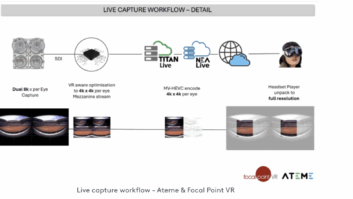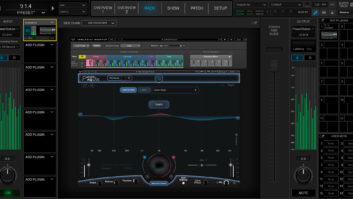
New advances in technology are contributing to the rise of digital video, according to a new study from AOL. When it comes to new formats in digital video, the ‘State of the Industry Mobile Video Report’ reveals over half (55 per cent) of buyers and sellers in the UK believe immersive formats such as 360-degree video will provide one of the best revenue streams over the next 12 months.
However, these formats are still in the early days of adoption, with only 20 per cent of consumers in the UK watching VR video once a week or more (versus 28 per cent globally). Sixty-eight per cent of Brits say they never watch VR (versus 58 per cent globally).
The study, conducted research agency InsightsNow surveyed 1,600 buyers and sellers, and 1,300 consumers from across seven markets, including the UK to uncover the role of digital video in advertising and media consumption today.
Over half of buyers in the UK (55 per cent) think that emerging formats such as virtual reality and Outstream will drive revenue in the next twelve months (versus 50 per cent globally). Now a growing phenomenon, 62 per cent of advertisers in the UK believe there is room for VR in the digital video marketplace, compared to 64 per cent globally.
AOL said that although immersive formats are yet to fully take off with consumers, live formats are becoming mainstream, particularly on social media platforms drawing in a wide range of audiences for short bursts of time as a result. 42 per cent of consumers surveyed in the UK now watch live content once or more than once a week (versus 55 per cent globally). 68 per cent of buyers in the UK are looking to create better user experiences when developing new video formats (versus 79 per cent globally), in comparison to 62 per cent of sellers in the UK (versus 58 per cent globally).
Two-fifths (40 per cent) of buyers and sellers in the UK expect the amount of video inventory to rise by a quarter within the next twelve months (versus 46 per cent globally). Commercially, 71 per cent of buyers and sellers plan to invest in pre-roll, suggesting linear video ads are a lucrative area for revenue.
Video has now become a fundamental part of daily online behaviour in the UK, with 71 per cent of consumers now watching digital video on any device every day, and just over half of consumers in the UK (54 per cent) claiming they watch more digital videos today compared to just one year ago (versus 66 per cent globally).
With video now a huge part of everyday life, over half (57 per cent) of advertisers in the UK believe that video is the future of advertising (versus 65 per cent globally), while almost half (49 per cent) of publishers are saying budgets are shifting from television and other formats including broadcast and display to fund digital video (versus 54 per cent globally).
Programmatic video spend is expected to rise, with 79 per cent of buyers saying they expect their spend on programmatic to increase in the next 12 months. Globally, the study found that 41 per cent of video budgets are being allocated to programmatic video buys. In the UK, 48 per cent of digital video revenue for advertisers is now sold programmatically compared to manual direct buys.
The length of a video is key for consumers as attention spans continue to get shorter and shorter – 64 per cent of Brits watch videos that are under one minute long, and on a global scale, on average three-fifths (60 per cent) of consumers share similar viewing habits.
As micro-videos are more frequently consumed, the report shows a depreciation in engagement as videos get longer. 72 per cent of UK consumers watch videos under 5mins long (versus 81 per cent globally) whereas 60 per cent commit to videos lasting over ten minutes in length – compared to 69 per cent globally.
Creating a seamless consumer experience is a challenge that advertisers and publishers continue to face, as just over one third (34 per cent) of consumers in the UK (and globally) say they will stop watching a video that has been interrupted only twice due to buffering.
Load times continue to be a hindrance – 40 per cent of buyers and sellers in the UK think this will act as a catalyst to spending less on mobile video advertising next year (versus 34 per cent globally).
“We’re entering a new era of digital video for publishers and advertisers,” said Stuart Flint, managing director, AOL UK. “Our research shows how important digital video has become, with almost all consumers in the UK (97 per cent) expecting to watch either similar amounts or more online video within the next six months.
“When it comes to new formats, consumer appetite is still in its infancy. Advertisers and publishers have an opportunity to flex their creative muscle and tailor content to serve their audiences’ needs and interests. The future is firmly in digital video, and advertisers and publishers must be prepared to invest in emerging formats to enhance the consumer experience.
“With new technologies such as immersive video on the rise, AOL is committed to investing in video-led content, platforms and formats so we can continue to build brands people love.”







